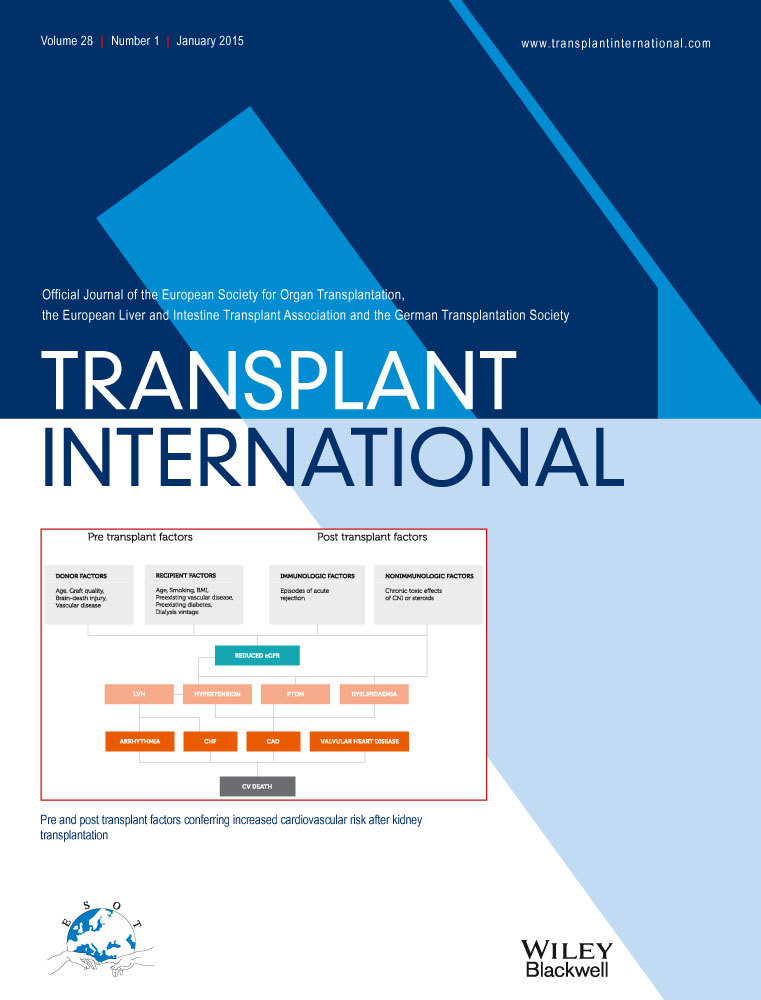Metabolic syndrome definitions and components in predicting major adverse cardiovascular events after kidney transplantation
Summary
Metabolic syndrome (MetS) associates with cardiovascular risk post-kidney transplantation, but its ambiguity impairs understanding of its diagnostic utility relative to components. We compared five MetS definitions and the predictive value of constituent components of significant definitions for major adverse cardiovascular events (MACE) in a cohort of 1182 kidney transplant recipients. MetS definitions were adjusted for noncomponent traditional Framingham risk factors and relevant transplant-related variables. Kaplan–Meier, logistic regression, and Cox proportional hazards analysis were utilized. There were 143 MACE over 7447 patient-years of follow-up. Only the World Health Organization (WHO) 1998 definition predicted MACE (25.3 vs 15.5 events/1000 patient-years, P = 0.019). Time-to-MACE was 5.5 ± 3.5 years with MetS and 6.8 ± 3.9 years without MetS (P < 0.0001). MetS was independent of pertinent MACE risk factors except age and previous cardiac disease. Among MetS components, dysglycemia provided greatest hazard ratio (HR) for MACE (1.814 [95% confidence interval 1.26–2.60]), increased successively by microalbuminuria (HR 1.946 [1.37–2.75]), dyslipidemia (3.284 [1.72–6.26]), hypertension (4.127 [2.16–7.86]), and central obesity (4.282 [2.09–8.76]). MetS did not affect graft survival. In summary, although the WHO 1998 definition provides greatest predictive value for post-transplant MACE, most of this is conferred by dysglycemia and is overshadowed by age and previous cardiac disease.




